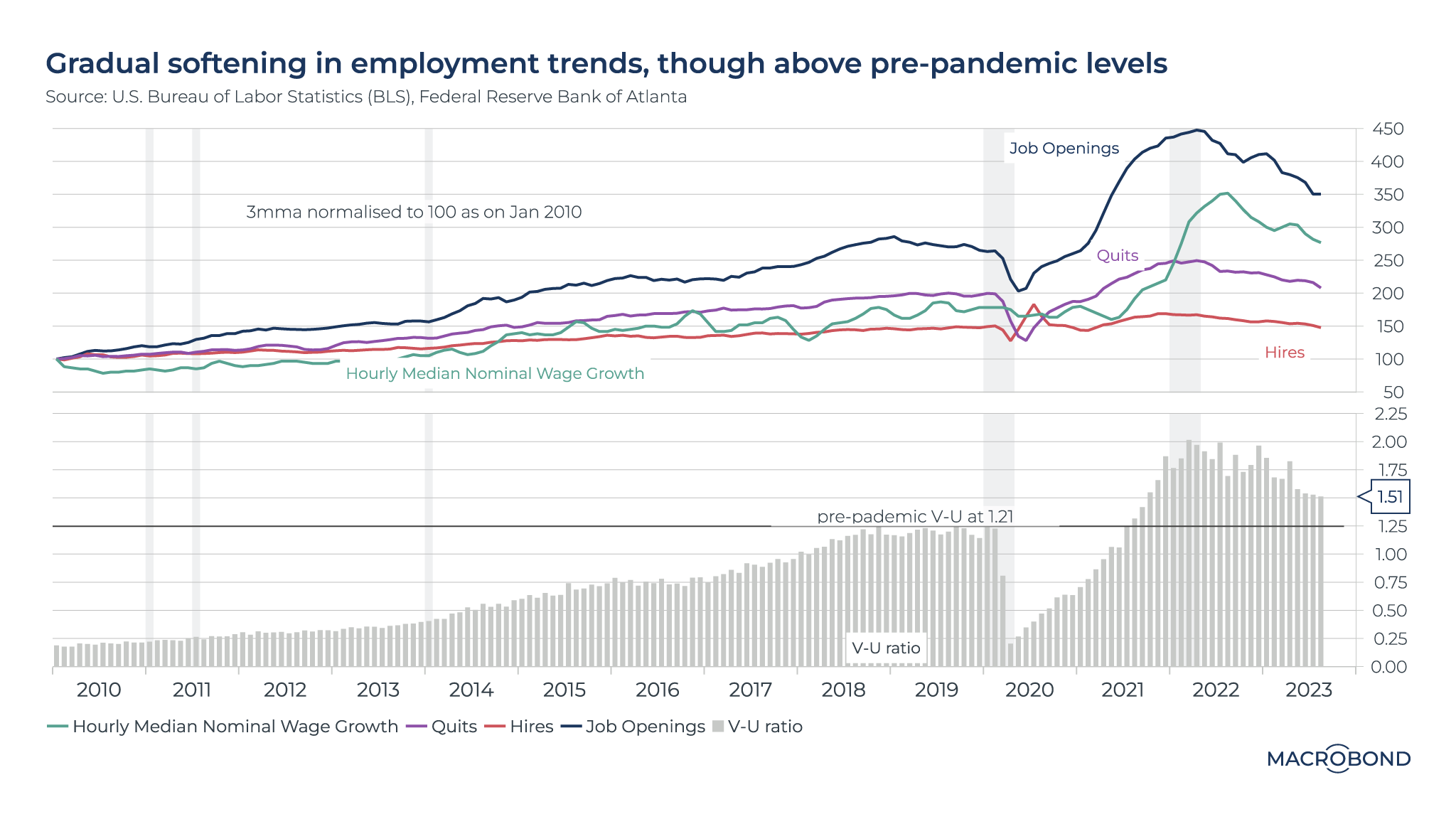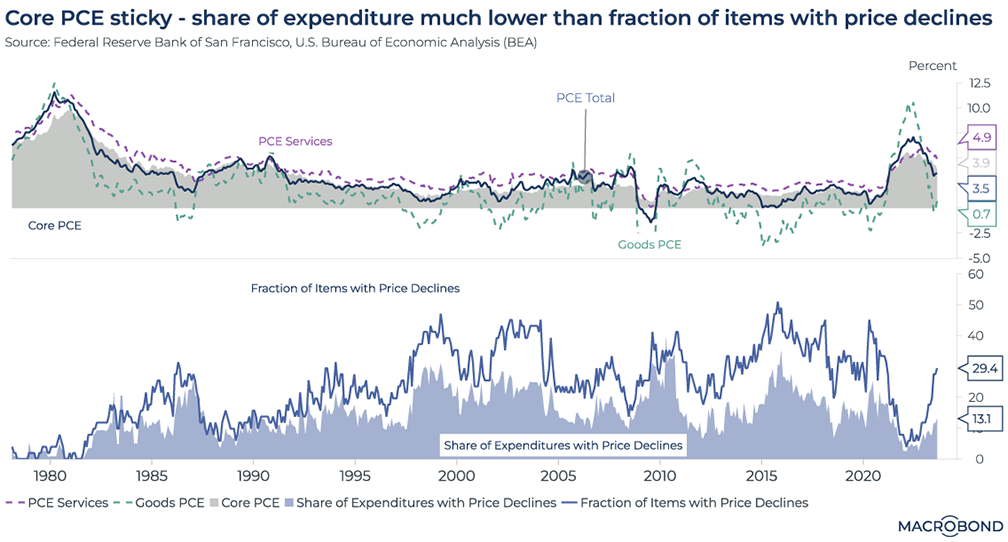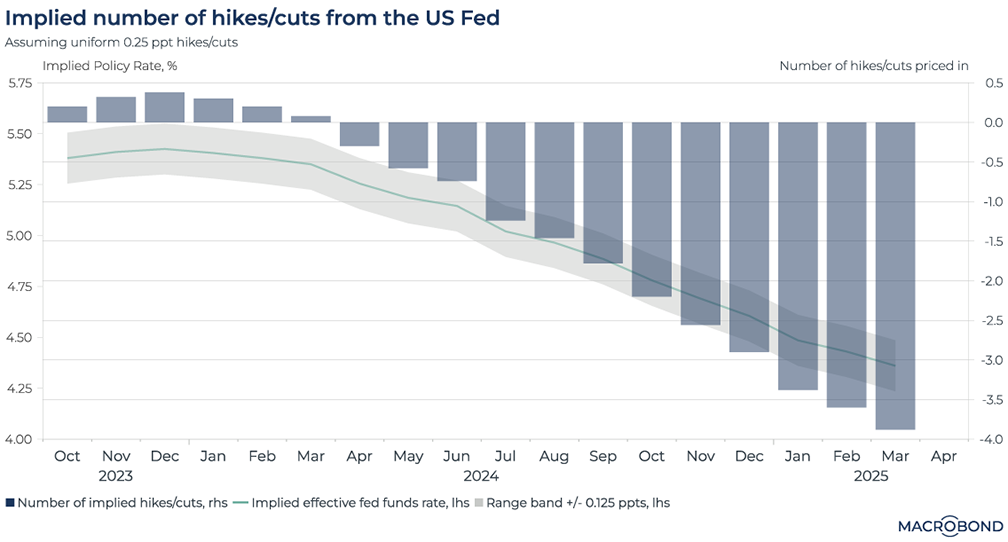Non-farm payrolls may show only modest softening in the US job market
.png)
The September non-farm payrolls report, a key data release watched by the Federal Reserve to gauge employment trends, is scheduled for release on Friday.
Using Macrobond’s partnership with Indicio Technologies, we were able to create a model for NFP. It suggests that September payrolls rose by 170,000 – only a marginal softening from the 187,000 print seen a month earlier.
Such models are built by seeking out the most explanatory variables available. So what is the data context for this healthy forecast?
Recent employment trends
The August JOLTS (Job Openings and Labor Turnover Survey) data suggested that employment trends with Job openings (9.61 million), hires (5.857 million) and quits (3.64 million) remained well above pre-pandemic levels.
Median nominal wage growth was 5.5 percent on a three-month moving average basis, also supporting the resilient trend.
Importantly, as the second panel in the chart shows, the vacancies-to-unemployed ratio – indicative of job market tightness and demand-supply mismatch – was 1.51, higher than the January 2020 level of 1.21.
The tight labour market through 2023 has supported US consumer spending, keeping core price pressures intact.
The gradual nature of the labour market normalisation process is shown in the next chart, which tracks the three-month moving averages of these four variables over the past 13 years. Year-to-date openings, hires, and wage growth have decelerated since the peaks seen in 2022. However, true labour-market normalisation – with demand and supply closer to pre-pandemic levels – might still take one or two more quarters, once the transmission of rate tightening has materialised on overall economic demand.

Personal consumption expenditures (PCE)
For August, core PCE – the Fed’s primary inflation gauge – came in at 3.9 percent, as the gray zone in the next chart shows. (Last month, we used Indicio to forecast this data point accurately.)
This provided little respite for either consumers or the Fed and its 2 percent inflation target. This stickiness in core inflation – broadly representing demand in the economy – is coming on the back of the surge seen in post-pandemic wages and employment numbers.
As we wrote in our forecast about two weeks ago – and as the second panel of our updated chart shows – almost 30 percent of the items in the PCE are showing price declines. But only 13 percent of expenditures are experiencing price declines.

For now, both core PCE and employment trends remain very relevant given the Fed’s data-dependent stance.
These data points align with market expectations – shown in our final chart – that any rate-easing cycle seem unlikely before the second half of 2024.

Indicio’s automated forecasts are built using univariate and multivariate models, allowing you to combine different approaches to create a forecast that can potentially outperform any single model. For NFP, our models considered several employment-related indicators and data points related to monetary policy, inflation, consumer sentiment and more.
Learn how you can forecast like a PhD quant with Macrobond x Indicio.
3 topics
.png)
Macrobond delivers the world’s most extensive macroeconomic & financial data alongside the tools and technologies to quickly analyse, visualise and share insights – from a single integrated platform. Our application is a single source of truth for...
Expertise
.png)
Macrobond delivers the world’s most extensive macroeconomic & financial data alongside the tools and technologies to quickly analyse, visualise and share insights – from a single integrated platform. Our application is a single source of truth for...
.png)